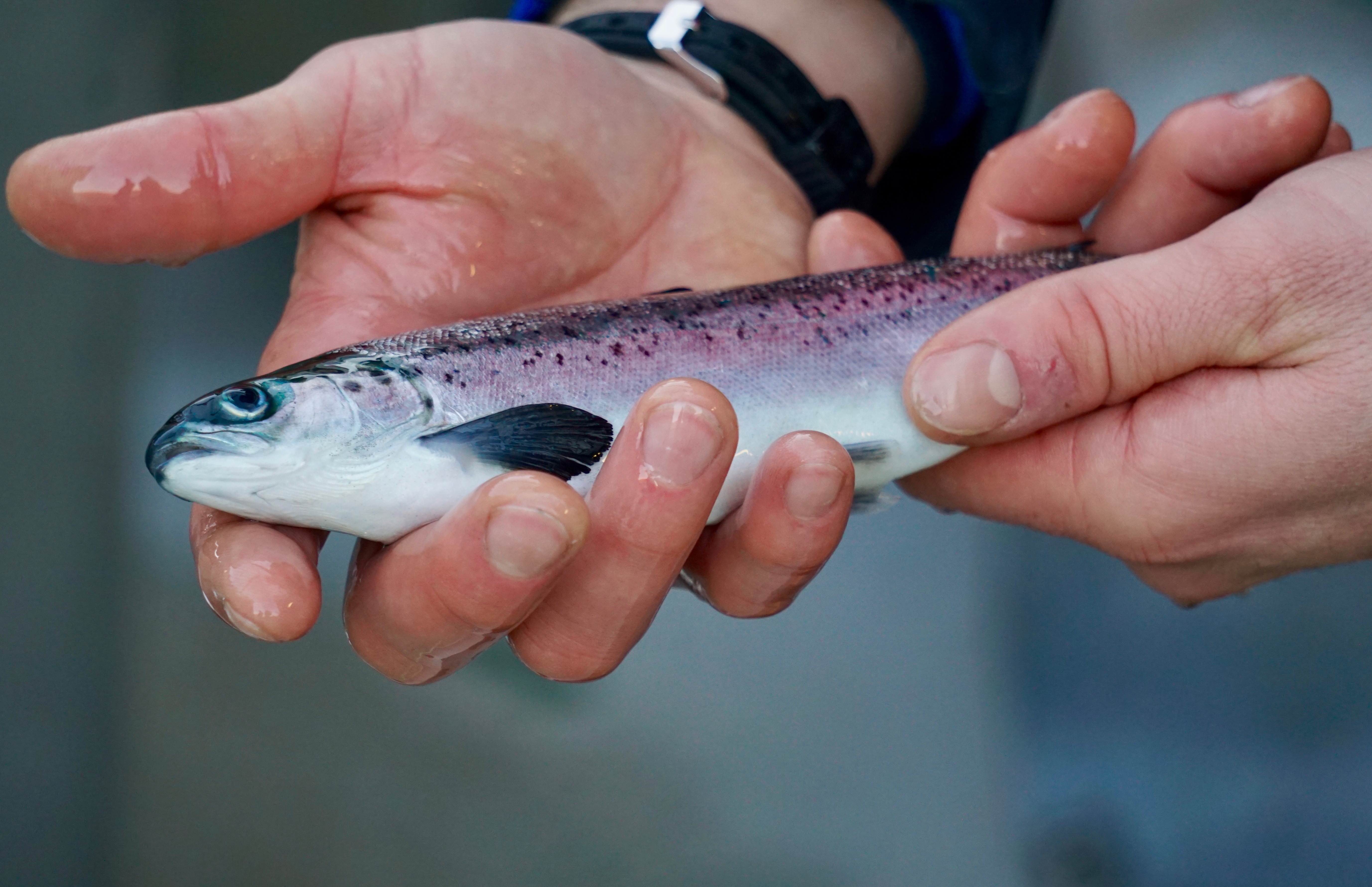First Barcaldine smolts transferred to sea

The smolts, which arrived at Barcaldine as eggs in January, were hatched and reared using a recirculating aquaculture system (RAS).
They had an average weight of 160g – more than double that of smolts grown by the company when using traditional hatchery methods.
Scottish Sea Farms’ freshwater manager, Pål Tangvik, said: ‘This is a major milestone for all of the team, not just at Barcaldine but across the company.
‘The new hatchery has given us greater control over key factors, including water quality, oxygen levels, temperature, light and speed of flow, meaning we have been able to ensure the best growing environment for the salmon.
‘The result is bigger, more robust smolts that will be better able to withstand the natural challenges of the marine environment.
‘We will also be able to shorten the time these salmon will spend at sea by up to two months, which will reduce their exposure to these challenges and increase survival rates, and have longer fallow periods between crops, which will contribute towards a safer environment for subsequent generations of fish.’
The young salmon were transferred directly from the hatchery, on the shores of Loch Creran, to well boat ahead of their onward journey to one of Scottish Sea Farms’ Shetland farms, removing the need for transportation by road or air.
This will help fish welfare, said the company, adding that the facility promises to be transformational with regards to environmental performance too.
Barcaldine operations manager Noelia Rodriguez said: ‘Incoming water is filtered to remove any particles, then disinfected using UV light and circulated to anywhere in the hatchery.’
From there it is maintained at a constant temperature of between 12-14 degrees, before being cleaned again and recirculated every 20 to 30 minutes.
‘Combined, this uses 98 per cent less freshwater and significantly less energy compared with heating and cooling water at traditional hatcheries,’ she said.
‘Adding to this, the building uses a biomass energy system – thought to deliver the biggest CO2 savings of any renewable heat source – to provide heating and hot water, and there is provision for a hydro scheme so that we can generate even more energy in a greener way.’
The facility, which includes four incubation units and four hatcheries, has taken more than two years to build and is due to have its official opening in 2020.
Scottish Sea Farms’ managing director Jim Gallagher said: ‘We haven’t rushed the process. We’ve taken care to make sure we get it right at every stage.
‘However, the sheer scale of the investment being made – time, thought and money – signifies our commitment to fish health and to providing a more secure food supply.
‘The RAS technology enables us to control with pinpoint accuracy when the salmon are ready to go to sea, giving the fish the best possible experience and giving customers the world over more security over supply than ever before.’

